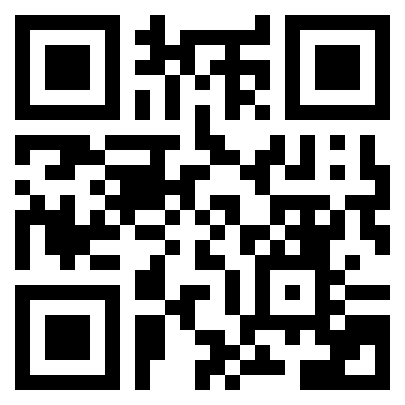- ATHE Level 6 Unit 18 Human Resource Management Assignment Brief
- Unit CMI321 Managing Own Personal and Professional Development Assessment | BCU
- CIPD Unit 5CO01 Organisational Performance and Culture in Practice Learner Assessment Brief 2025/26
- ATHE Level 3 Unit 2 How Businesses and Organisations Work Assignment | LCPS
- Unit 531 Principles of Professional Coaching Assessment Brief | SBTL
- PSY4011 Developmental Psychology Assessment Brief – Identity Development in Childhood
- MBA7066 Innovation and Entreprenuership Assignment Brief 2024-2025 | University of Greater Manchester
- Unit 17 Caring for Individuals with Dementia BTEC Level 3 Assignment Brief Case Study
- BTEC Level 3 Unit 15 Care for Individuals with Dementia Assessment
- Unit 3: Professional Practice Authorised Assignment Brief 2025–2026, ESOFT Metro Campus
- Unit 7 Leadership & Management People Assignment – Level 3 Diploma in Business and Management
- HNC Civil Engineering Assignment 2 The Construction Environment
- HNC Civil Engineering Assignment 1 Geotechnics & Soil Mechanics Academic Year 24/25
- UNIT CMI 519 Managing Quality and Continuous Improvement Assessment Brief
- Level 5 in Leadership and Management in Adult Care – Governance and Regulatory Process in Adult Care and Decision Making in Adult Care
- BTM6GSM Global Strategic Management Level 6 Assignment 1 Case Study
- Level 5 in Leadership and Management in Adult Care – Supervising Others and Facilitate Coaching and Mentoring of Practitioners in Care Settings
- Unit 2 Marketing Processes and Planning Assignment Brief 2025-2026
- Unit 805 Strategic Communication Assignment Brief- Media Impact on International Organisations
- UNIT CMI 513 Managing Projects to Achieve Results Assessment Brief
Reptiles have become increasingly popular over the years and import and export have also increased: Reptile Care, Welfare and Ethics Assignment, UOG, UK
| University | University of Glasgow (UOG) |
| Subject | Reptile Care Welfare and Ethics |
- Introduction:
Reptiles have become increasingly popular over the years and import and export have also increased. Reptiles are traded in many different forms, but the main trade is in live animals and skins (UNEP WCMC, 2012).
A wide range of live birds and reptiles continues to be seen on sale to hobbyists and the pet-keeping public through all types of sales including pet shops, commercial breeders, and the internet (RSPCA, 2006).
Current Figures and Cost of the Reptile industry in the UK (EUARK, 2012):
- £200 Million – Value of the reptile sector of the UK pet industry in 2012
- £5.9 Billion – UK Pet trade overall value in 2010
- Eight Million – Reptile pets in the UK
- 1.1 Million – UK households keeping reptiles
- 1,000 – Vivariums sold per week in the UK by just one manufacturer
- 250,000 – Reptiles and amphibians bred in the UK each year, which increasing
annually - Over 1,000 – Number of stores selling reptiles in the UK
- Trade routes
Trade-in this area usually takes one of two main routes; illegal or legal (WWF, 2002). Legal routes are those trade routes that the law allows and there is a huge legal market for wild plants and animals – a market which the illegal trade undercuts. These individuals, rogue traders and criminal gangs, all threaten sustainable and responsible businesses that provide vital income to some of the world’s poorest countries (WWF, 2002).
The legal trade in protected species broadly flows from range areas – where the species come from – to consumer areas. The situation is made more complex by a thriving trade in captive-bred or artificially propagated specimens, which may be farmed in a variety of countries and traded internationally (WWF, 2002). The involvement of intermediate destinations and the consequent re-export trade further complicates the picture and opens up opportunities for illegal trade. Intermediate areas are the following (WWF, 2002):
- “Funnel” locations where shipments are bulked for longer-haul journeys.
- Stopovers and convenient ports – these may be ports where illegal or legal
wildlife shipments are switched between different modes of transport. For
instance, shipments might be switched between surface and air transport. - Processing centres – where products made from wildlife are manufactured.
- Transhipment centres and “free” trade areas – countries where porous borders, weak legislation and lax enforcement allow the illegal import and export of wildlife to continue unhindered and provide suitable transhipment locations for wildlife trafficking.
- Regional distribution centres – these are close to final destinations and provide places where bulk shipments are broken down into smaller consignments and transported on to the consumer market.
Do You Need Assignment of This Question
- Global and International trade:
Countries all over the world have, at some point or still are; a huge impact both
environmentally and economically on the reptile trade industry. Between 1997 and 1999, the UK accounted for 12 per cent of all European Union (EU) exports and reexports of permitted consignments of CITES and European Community (EC) listed species. Research shows that the principal destination, during this time period, was Asia; which was also the largest source of imports at this time (WWF, 2002).
Many pet keepers in the UK assume that any animal on sale is captive-bred and that all wild animals are protected by international regulations to limit their capture and use for the pet trade (RSPCA, 2006). Both of these assumptions are untrue.
International trade in wild animals is only regulated for species that are endangered or threatened by this trade, such as following the impact of habitat destruction and/or the removal of animals for food and the pet trade and which are therefore listed on the Convention on the International Trade in Endangered Species of Wild Fauna and Flora (CiTES) appendices (RSPCA, 2006). This means that there is a huge unknown numbers gap when it comes to the number of unprotected species of reptiles being traded internationally and globally.
The Convention to protect listed species is then implemented through EU CITES trade regulations’ and enforced through the UK COTES (Control of Trade in Endangered Species) legislation ‘(RSPCA, 2006). As these controls do not monitor the trade in non-CITES listed species; it is, therefore, difficult to determine how many species and individual animals in total are imported into the EU or UK from the wild. Reptile Care, Welfare & Ethics
For example, of the approximate 9.000 species of birds and 7,700 species of reptiles recorded in the wild, less than 20 per cent of bird species and eight per cent of reptile species are protected through CITES to control their commercial international trades (RSPCA, 2006). Some key facts for the reptile industry involving CITES are as follows DEFRA, 2012):
- 175 countries are signed up to CITES
- 34,000 species of plants and animals protected by CITES
- UK legal trade in CITES specimens worth £10-50 million per annum
Buy Answer of This Assessment & Raise Your Grades
Can I pay someone to do my assignment? If yes then would reach the perfect place at Diploma Assignment Help UK we have a panel of online assignment experts who can easily customize your Reptile Care, Welfare, and Ethics Assignment at a very cheap price. So, without wasting any time visit our website today.




